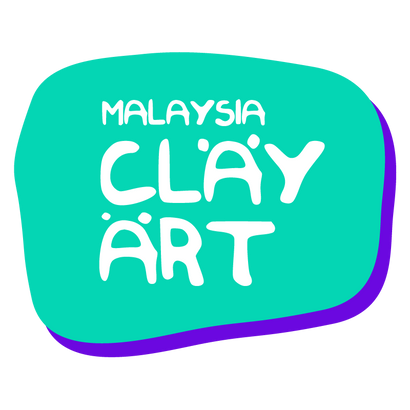Malaysian customers, please select Bank Transfer. PayPal transactions incur a 4.4% fee plus RM2.
Malaysian customers, please select Bank Transfer. PayPal transactions incur a 4.4% fee plus RM2.
Start here
Complete Guide to RBT Syllabus for Tingkatan 1-3: Key Modules and Learning Outcomes
November 13, 2024 3 min read

Reka Bentuk dan Teknologi (RBT) is an exciting subject in Malaysian secondary schools. It helps students develop practical skills in design and technology, from creating molds to exploring renewable energy like solar power. This guide will help you understand what students learn in the RBT syllabus from Tingkatan 1 to Tingkatan 3, as well as the valuable skills they gain.
What is RBT All About?
RBT is a hands-on subject that combines creativity with technology. Students don’t just learn theory—they get to design, build, and experiment. This helps them understand how technology and design fit into the real world. By building these skills, students gain knowledge that could be useful in many careers, such as engineering, design, and manufacturing.
Tingkatan 1: Building a Strong Foundation
In Tingkatan 1, students start with the basics. They learn about simple design principles, how to use basic tools, and how to handle materials safely. The main goal in Tingkatan 1 is to get students comfortable with design thinking and basic technology. By the end of the year, they should understand how to approach a project step-by-step and feel ready to move on to more advanced skills.

Tingkatan 2: Learning Practical Skills
In Tingkatan 2, students get to try more hands-on projects. For example, they might learn how to make molds, which can be used in art, product design, and even medical fields. They also explore alternative energy sources, like solar power. Through small projects, they see how solar cells work and why renewable energy is important. By the end of Tingkatan 2, students have practical experience with materials and basic technology concepts that prepare them for more advanced projects.
Tingkatan 3: Advanced Projects and Sustainable Design
Tingkatan 3 focuses on applying what students have learned in bigger projects. This year’s projects encourage students to think about sustainability—how to design in ways that are good for the environment. For example, students might work on a project that involves upcycling or using fewer resources. By now, they’re prepared to work on projects independently, using their skills in creative problem-solving and sustainable design.

Why RBT Matters in the Real World
One of the biggest benefits of RBT is that it teaches students skills they can use outside the classroom. Through each module, they learn teamwork, critical thinking, and creativity—all valuable skills in today’s world. Many students find RBT exciting because they get to see the results of their hard work and develop confidence in their skills.
Exciting Topics in RBT
Some of the hands-on topics in RBT are especially popular with students. For example, learning to make molds introduces students to manufacturing and art. Exploring solar power helps them understand renewable energy and sustainability, which are important topics in today’s world.
How Parents and Teachers Can Help
Parents and teachers can support students by encouraging them to practice these skills at home. Small DIY projects or watching videos on design can be great ways to make learning RBT even more fun. Supporting students as they work on RBT projects can help them gain confidence and a deeper interest in technology and design.
The Value of RBT in Secondary School
RBT is much more than just another subject in school. It’s a hands-on learning experience that helps students develop valuable life skills. By the time they finish Tingkatan 3, they’ll have practical skills in design, technology, and sustainability. For students, parents, and teachers, RBT offers a fun, engaging way to learn and explore creativity and problem-solving.
Leave a comment
Comments will be approved before showing up.
Also in Let's Get Creative

How to Heat Shrink Wrap Oddly Shaped Items Perfectly (Step-by-Step Guide)
April 04, 2025 2 min read
Read More
Heat Shrink Wrap in the Food Industry: Ensuring Freshness and Safety
March 10, 2025 3 min read
Read More
How to Select the Right Heat Shrink Band Size for Your Glass Jars and Bottles
February 28, 2025 3 min read
Recent Articles
- How to Heat Shrink Wrap Oddly Shaped Items Perfectly (Step-by-Step Guide)
- Heat Shrink Wrap in the Food Industry: Ensuring Freshness and Safety
- How to Select the Right Heat Shrink Band Size for Your Glass Jars and Bottles
- Celebrate Your Birthday Party with a Craft Workshop
- Is Heat Shrink Wrap Food Safe? Everything You Need to Know
- Can You Use a Hair Dryer for Heat Shrink Wrapping? Pros, Cons, and Best Practices
- How to Market and Sell Your Handmade Crafts for Maximum Profit in Malaysia
- From Hobby to Business: A Complete Guide to Financial Planning for Starting a Profitable Handmade Craft Business in Malaysia
- Why Investing in Quality Clay Saves You More Money in the Long Run
- The Art of Chinese New Year Calligraphy - How to Appreciate and Display It
Join Our WhatsApp Channel!
Subscribe now to get the latest updates on sales, promotions, new releases, and FREE tutorials!
**Get an exclusive discount on your first purchase when you join!**

HELLO THERE!
🚀 RECEIVE 10% OFF YOUR FIRST ORDER.
JOIN OUR WHATSAPP CHANNEL TO CLAIM YOUR DISCOUNT CODE 📢

